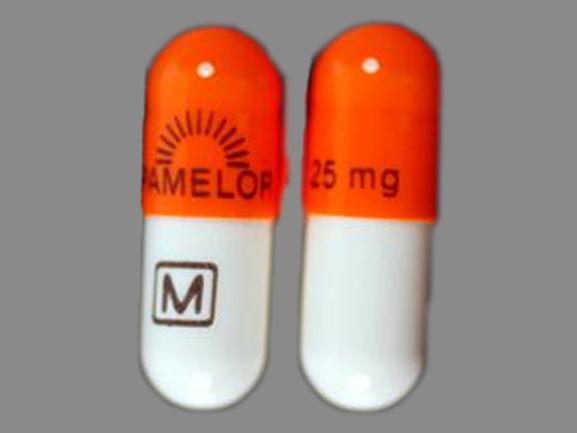Pamelor Interactions
There are 706 drugs known to interact with Pamelor (nortriptyline), along with 20 disease interactions, and 1 alcohol/food interaction. Of the total drug interactions, 144 are major, 538 are moderate, and 24 are minor.
- View all 706 medications that may interact with Pamelor
- View Pamelor alcohol/food interactions (1)
- View Pamelor disease interactions (20)
Most frequently checked interactions
View interaction reports for Pamelor (nortriptyline) and the medicines listed below.
- albuterol
- Ambien (zolpidem)
- aspirin
- Ativan (lorazepam)
- Cymbalta (duloxetine)
- Flexeril (cyclobenzaprine)
- gabapentin
- Klonopin (clonazepam)
- Lamictal (lamotrigine)
- levothyroxine
- Lexapro (escitalopram)
- lisinopril
- Lyrica (pregabalin)
- metformin
- Neurontin (gabapentin)
- Nexium (esomeprazole)
- omeprazole
- prednisone
- Prilosec (omeprazole)
- Protonix (pantoprazole)
- Prozac (fluoxetine)
- Synthroid (levothyroxine)
- Topamax (topiramate)
- tramadol
- trazodone
- Vitamin B12 (cyanocobalamin)
- Vitamin D3 (cholecalciferol)
- Xanax (alprazolam)
- Zanaflex (tizanidine)
- Zoloft (sertraline)
Pamelor alcohol/food interactions
There is 1 alcohol/food interaction with Pamelor (nortriptyline).
Pamelor disease interactions
There are 20 disease interactions with Pamelor (nortriptyline) which include:
- anticholinergic effects
- cardiovascular disease
- pheochromocytoma
- acute myocardial infarction recovery
- cardiovascular disease
- seizure disorders
- bone marrow suppression
- diabetes
- renal/liver disease
- schizophrenia/bipolar disorder
- tardive dyskinesia
- acute alcohol intoxication
- bipolar disorder screening
- glaucoma
- hyper/hypoglycemia
- liver/renal disease
- neutropenia
- schizophrenia
- thyroid disorders
- urinary retention
More about Pamelor (nortriptyline)
- Pamelor consumer information
- Compare alternatives
- Pricing & coupons
- Reviews (39)
- Drug images
- Side effects
- Dosage information
- During pregnancy
- Drug class: tricyclic antidepressants
- Breastfeeding
- En español
Related treatment guides
Drug Interaction Classification
| Highly clinically significant. Avoid combinations; the risk of the interaction outweighs the benefit. | |
| Moderately clinically significant. Usually avoid combinations; use it only under special circumstances. | |
| Minimally clinically significant. Minimize risk; assess risk and consider an alternative drug, take steps to circumvent the interaction risk and/or institute a monitoring plan. | |
| No interaction information available. |
See also:
Further information
Always consult your healthcare provider to ensure the information displayed on this page applies to your personal circumstances.


